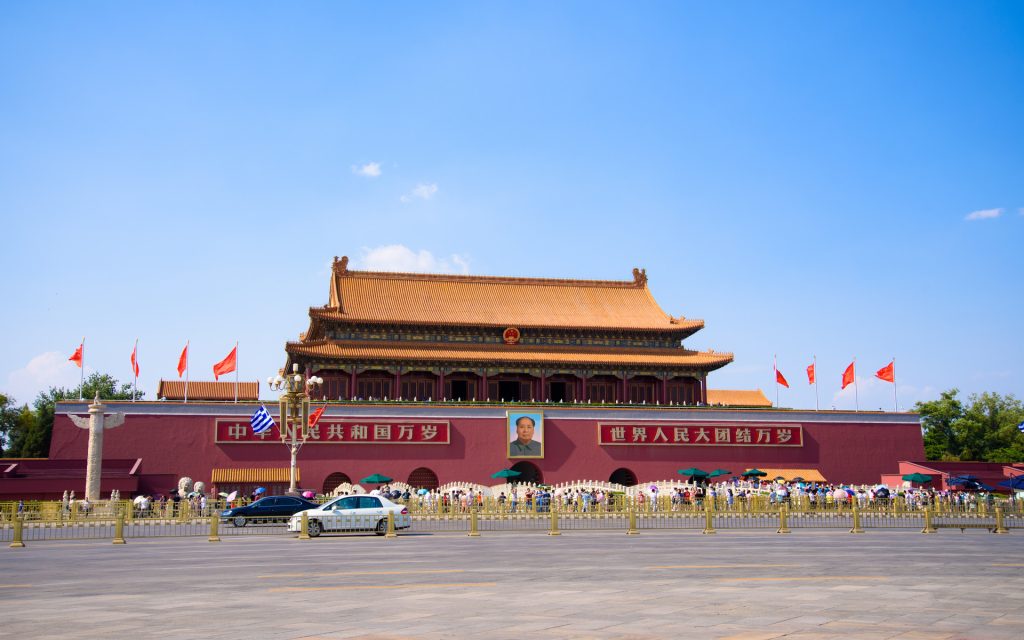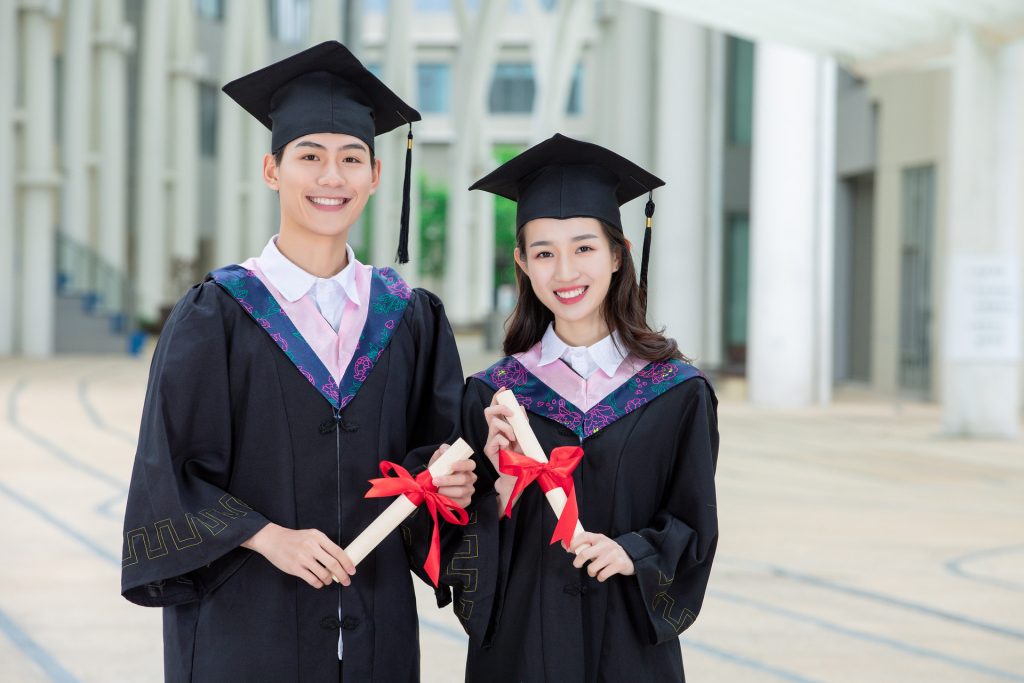Beijing offers a rich tapestry of cultural, historical, and modern attractions that cater well to international students. Here are some must-see places:
- The Great Wall of China
- Forbidden City (Palace Museum)
- Tiananmen Square
- Temple of Heaven
- Summer Palace
- 798 Art District
- Hutongs
- Beihai Park
- Lama Temple (Yonghe Temple)
- Beijing Olympic Park
Exploring these attractions will give international students a well-rounded experience of Beijing’s rich history, culture, and contemporary life.
The Great Wall of China
As an international student visiting the Great Wall of China, you’re in for an unforgettable experience! Here’s a guide to help make your visit memorable:
- There are several sections of the Great Wall near Beijing, each offering a unique experience. Popular options include Badaling, Mutianyu, and Jinshanling. Badaling is easily accessible and often crowded, while Mutianyu offers a good balance of scenery and fewer crowds. Jinshanling is known for its well-preserved and less-visited sections.

- Many tour companies offer guided trips to the Great Wall from Beijing, including transportation to and from your accommodation. Alternatively, you can take public transportation to certain sections, such as Badaling or Mutianyu, by bus or train.
- Purchase your tickets in advance if possible, especially during peak tourist seasons. Some sections of the wall may have separate entrance fees, so be prepared for that.
- Wear comfortable shoes and clothing suitable for walking and climbing stairs. The Great Wall can be steep and uneven in places, so be prepared for a bit of a workout!
- Carry essentials like water, sunscreen, snacks, and a smartphone for capturing the stunning views.
- Help preserve this iconic landmark by not littering and respecting any posted rules or regulations. Stay on designated paths and avoid climbing on fragile or crumbling sections of the wall.
- Once you’re on the wall, take your time to soak in the breathtaking scenery and imagine the history that surrounds you. Don’t forget to snap plenty of photos to commemorate your visit!
Forbidden City Palace Museum)
Visiting the Forbidden City as an international student in Beijing is an incredible opportunity to immerse yourself in China’s imperial history and architecture. Here’s a guide to help you make the most of your visit:
- Purchase your tickets in advance to avoid long queues, especially during peak tourist seasons. The entrance to the Forbidden City is through the Meridian Gate (Wumen), located at the southern end of Tiananmen Square.
- Consider renting an audio guide or joining a guided tour to gain deeper insights into the history and significance of the Forbidden City. English-language options are often available and can enhance your experience.
- The Forbidden City is vast, so allocate several hours to explore it thoroughly. Take your time wandering through the grand halls, courtyards, and gardens, and don’t miss highlights like the Hall of Supreme Harmony, Hall of Central Harmony, and Hall of Preserving Harmony.

- The Forbidden City served as the imperial palace for nearly 500 years, housing successive emperors of the Ming and Qing dynasties. Take the opportunity to learn about the lives of emperors, imperial rituals, and the cultural significance of various buildings and artifacts.
- Marvel at the intricate architectural details of the Forbidden City, from its iconic red walls and golden roofs to the ornate carvings and decorative motifs. Each building reflects traditional Chinese design principles and symbolism.
- The Forbidden City is also home to the Palace Museum, which houses an extensive collection of imperial treasures, artifacts, artworks, and historical documents. Plan some time to explore the museum’s exhibitions to gain a deeper understanding of China’s imperial past.
- Be mindful of cultural norms and etiquette while visiting the Forbidden City. Follow any posted rules, avoid touching artifacts or climbing on structures unless permitted, and be respectful of other visitors and the site’s historical significance.
Tiananmen Square
Exploring Tiananmen Square as an international student in Beijing offers a chance to witness firsthand one of China’s most significant historical and cultural landmarks. Here’s a guide to help you make the most of your visit:
- Tiananmen Square holds immense historical and political significance for China. Take some time to learn about its history before your visit.
- Tiananmen Square is open to visitors throughout the day, but it’s particularly stunning at sunrise or sunset. Keep in mind that certain areas may be restricted during special events or ceremonies.
- Explore the various monuments and landmarks within the square, including the Monument to the People’s Heroes, the Mausoleum of Mao Zedong, the Great Hall of the People, and the National Museum of China. Each of these sites offers insights into China’s history, politics, and culture.
- If you’re an early riser, consider attending the daily flag-raising ceremony at sunrise. It’s a patriotic ritual that attracts both tourists and locals alike.
- While exploring Tiananmen Square, remember to behave respectfully and follow any posted rules or regulations. Avoid engaging in any political activities or sensitive discussions, as the area is closely monitored by security personnel.
- Tiananmen Square offers many iconic photo opportunities, but be mindful of where and what you’re photographing. Certain areas may be off-limits to photography, and it’s essential to respect any signs or guidelines.
Temple of Heaven
Visiting the Temple of Heaven as an international student in Beijing is a wonderful opportunity to immerse yourself in Chinese history, culture, and spirituality. Here’s a guide to help you make the most of your visit:
- The Temple of Heaven, also known as Tiantan Park, is a UNESCO World Heritage Site and one of the most important religious complexes in China. It was originally built in the Ming Dynasty (early 15th century) as a place for emperors to perform solemn ceremonies for good harvests.
- The Temple of Heaven is typically open to visitors from early morning until early evening. Aim to visit during weekdays to avoid the crowds, especially during weekends and holidays.
- Take your time to explore the various structures within the Temple of Heaven complex, including the Hall of Prayer for Good Harvests, the Imperial Vault of Heaven, and the Circular Mound Altar. Marvel at the intricate architecture, colorful decorations, and serene atmosphere.

- Climb the Circular Mound Altar, a three-tiered marble platform symbolizing heaven, earth, and humanity. This sacred site was where the emperor performed rituals to communicate with the gods and pray for good harvests.
- Visit the Imperial Vault of Heaven, a smaller circular building located north of the Hall of Prayer for Good Harvests. It houses the Divine Kitchen, where offerings were prepared for the rituals.
- Take a leisurely stroll through the beautiful park surrounding the Temple of Heaven complex. Admire the ancient trees, lush gardens, and scenic pavilions, and observe locals engaging in various recreational activities such as tai chi, dancing, and kite flying.
- While exploring the Temple of Heaven, remember to behave respectfully and follow any posted rules or regulations. This is a sacred site for many Chinese people, so avoid making loud noises, littering, or engaging in inappropriate behavior.
- Take advantage of any guided tours, audio guides, or informational signage available at the site to deepen your understanding of the Temple of Heaven’s history, significance, and architectural features.
Visiting the Temple of Heaven is an enriching experience that offers insights into China’s spiritual heritage and architectural prowess. Approach your visit with reverence, curiosity, and an open heart, and you’re sure to create lasting memories.
Summer Palace
Exploring the Summer Palace as an international student in Beijing offers a delightful blend of natural beauty, historical significance, and cultural richness. Here’s a guide to help you make the most of your visit:
- The Summer Palace, known as Yiheyuan in Chinese, is a vast imperial garden complex that served as a summer retreat for Chinese emperors during the Qing Dynasty. It’s renowned for its stunning architecture, picturesque landscapes, and serene atmosphere.
- The Summer Palace is typically open to visitors from early morning until early evening. Plan to spend at least half a day exploring the various attractions within the complex, though you could easily spend a full day here.
- Explore key attractions within the Summer Palace, including the Hall of Benevolence and Longevity (Renshou Hall), the Long Corridor, the Marble Boat (also known as the Boat of Purity and Ease), and the Tower of Buddhist Incense (Foxiang Ge). Each of these structures offers unique architectural features and historical significance.
- Take a leisurely boat ride on Kunming Lake, which occupies a significant portion of the Summer Palace complex. Enjoy the scenic views of the surrounding hills, bridges, and pavilions, and observe traditional Chinese-style boating activities.
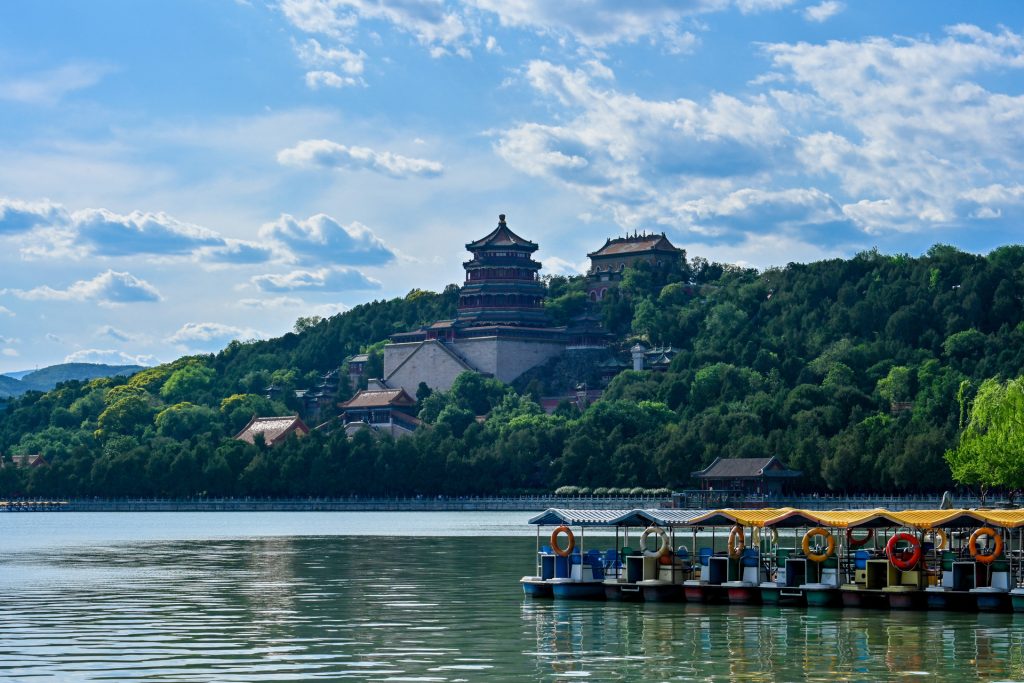
- Stroll along the Long Corridor, a covered walkway adorned with thousands of paintings depicting scenes from Chinese history, mythology, and literature. It’s one of the longest covered corridors in the world and offers a fascinating visual journey.
- Marvel at the Marble Boat, a striking pavilion built entirely of marble on the shores of Kunming Lake. Originally constructed as a symbol of stability and permanence, it’s now a popular photo spot and emblematic of the Summer Palace’s architectural splendor.
- Climb to the top of the Tower of Buddhist Incense for panoramic views of the surrounding landscape. This towering pagoda offers breathtaking vistas of Kunming Lake, the Longevity Hill, and the sprawling gardens below.
- Explore the lush gardens, pavilions, and temples scattered throughout the Summer Palace complex. Admire the classical Chinese landscaping, serene ponds, and intricately designed architecture, and take time to relax and soak in the peaceful ambiance.
- Check if there are any traditional Chinese performances or cultural activities taking place during your visit. The Summer Palace often hosts musical concerts, opera performances, and traditional dance shows, providing a glimpse into China’s rich cultural heritage.
798 Art District
Exploring the 798 Art District as an international student in Beijing offers a vibrant and contemporary perspective on China’s art scene. Here’s a guide to help you make the most of your visit:
- 798 Art District, also known as Dashanzi Art District, is a thriving hub of contemporary art and culture located in the Chaoyang District of Beijing. It’s housed in a former industrial area characterized by Bauhaus-style factory buildings, which have been transformed into galleries, studios, cafes, boutiques, and creative spaces.
- 798 Art District is typically open to visitors from late morning until early evening, though specific opening hours may vary depending on individual galleries and establishments. Plan to spend several hours exploring the district to fully immerse yourself in its eclectic art scene.
- Wander through the numerous art galleries and studios scattered throughout the 798 Art District, showcasing a diverse range of contemporary artworks by both established and emerging artists. From paintings and sculptures to multimedia installations and avant-garde performances, there’s something to pique every artistic interest.
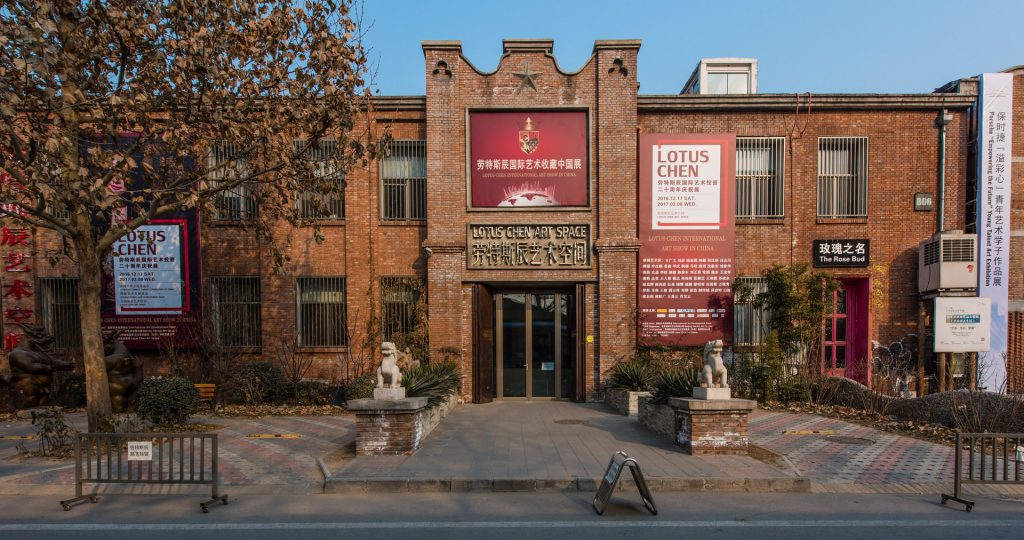
- Keep an eye out for outdoor street art, murals, and large-scale installations adorning the walls, courtyards, and open spaces of the 798 Art District. These ephemeral artworks contribute to the district’s dynamic and ever-evolving atmosphere, inviting exploration and discovery around every corner.
- Take a break from art appreciation and refuel at one of the many cafes, restaurants, or teahouses nestled within the 798 Art District. Enjoy a leisurely meal or a cup of coffee while soaking in the creative ambiance and mingling with fellow art enthusiasts.
- Browse through the boutiques and design shops offering unique fashion, accessories, home decor, and artisanal goods crafted by local designers and independent brands. It’s a great opportunity to pick up one-of-a-kind souvenirs or gifts to commemorate your visit.
- Check if there are any special art events, exhibitions, or cultural performances happening during your visit to the 798 Art District. From gallery openings and artist talks to live music concerts and film screenings, there’s always something happening to engage and inspire visitors.
- The 798 Art District is easily accessible by public transportation, including subway, bus, and taxi. Plan your route in advance and consider using a navigation app to help navigate the district’s maze-like layout.
Hutongs
Exploring Beijing’s hutongs as an international student offers a unique opportunity to delve into the city’s rich history, traditional culture, and vibrant community life. Here’s a guide to help you make the most of your hutong experience:
- Hutongs are narrow alleys or lanes formed by traditional courtyard residences known as siheyuans. These historic neighborhoods date back centuries and offer a glimpse into old Beijing’s architectural heritage and communal way of life.
- Wander through the labyrinthine maze of hutongs, taking in the charming alleyways, quaint courtyards, and traditional architecture. Each hutong has its own character and stories to tell, so don’t hesitate to explore off the beaten path.
- For a fun and authentic way to explore the hutongs, consider taking a rickshaw ride. A local driver can navigate the narrow lanes while sharing insights into the history, culture, and hidden gems of the area.
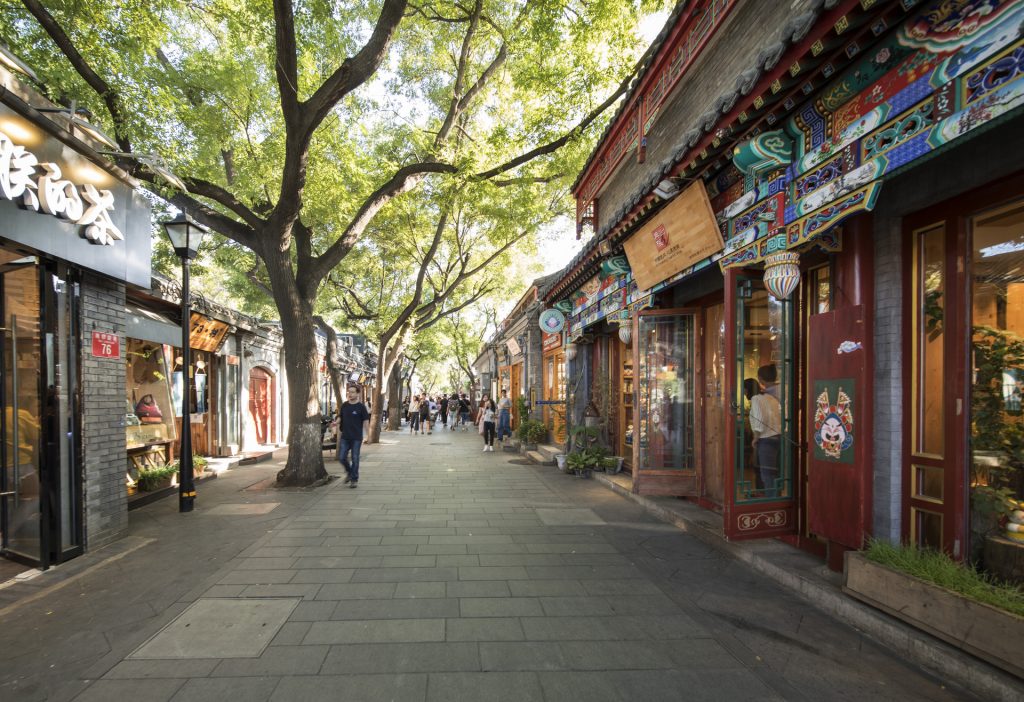
- Immerse yourself in the daily life of hutong residents by observing their routines, interacting with locals, and visiting neighborhood markets, teahouses, and family-run businesses. You might stumble upon artisans practicing traditional crafts or residents playing mahjong in a courtyard.
- Sample authentic Beijing cuisine at local eateries and street food stalls scattered throughout the hutongs. From savory jianbing (pancakes) and spicy hotpot to aromatic Beijing duck and steamed dumplings, there’s no shortage of culinary delights to tantalize your taste buds.
- Discover hidden gems like art galleries, boutiques, and craft workshops tucked away in the hutongs. These creative spaces showcase the work of local artists, designers, and artisans, offering unique souvenirs and artistic inspiration.
- Join a guided hutong tour or participate in a cultural workshop to gain deeper insights into hutong life and traditions. Learn about hutong architecture, traditional customs, or even try your hand at activities like dumpling making or calligraphy.
Beihai Park
Exploring Beihai Park as an international student in Beijing offers a serene escape from the bustling city streets and a chance to immerse yourself in the beauty of traditional Chinese gardens and architecture. Here’s a guide to help you make the most of your visit:
- Beihai Park, located in the heart of Beijing, is one of the oldest and most well-preserved imperial gardens in China. It covers a vast area of lakes, islands, pavilions, temples, and lush greenery, making it a tranquil oasis amidst the urban landscape.
- Beihai Park is typically open to visitors from early morning until early evening. Plan to spend several hours exploring the park at a leisurely pace to fully appreciate its natural beauty and historical significance.
- Explore key attractions within Beihai Park, including the iconic White Dagoba (Bai Ta), the Nine-Dragon Screen, the Five-Dragon Pavilions, and the Circular City. Each of these structures offers unique architectural features and historical symbolism.
- Climb to the top of the White Dagoba, a Tibetan-style stupa located on Jade Flower Island in the middle of the park’s lake. From the top, you’ll be rewarded with panoramic views of the surrounding gardens, lake, and city skyline.
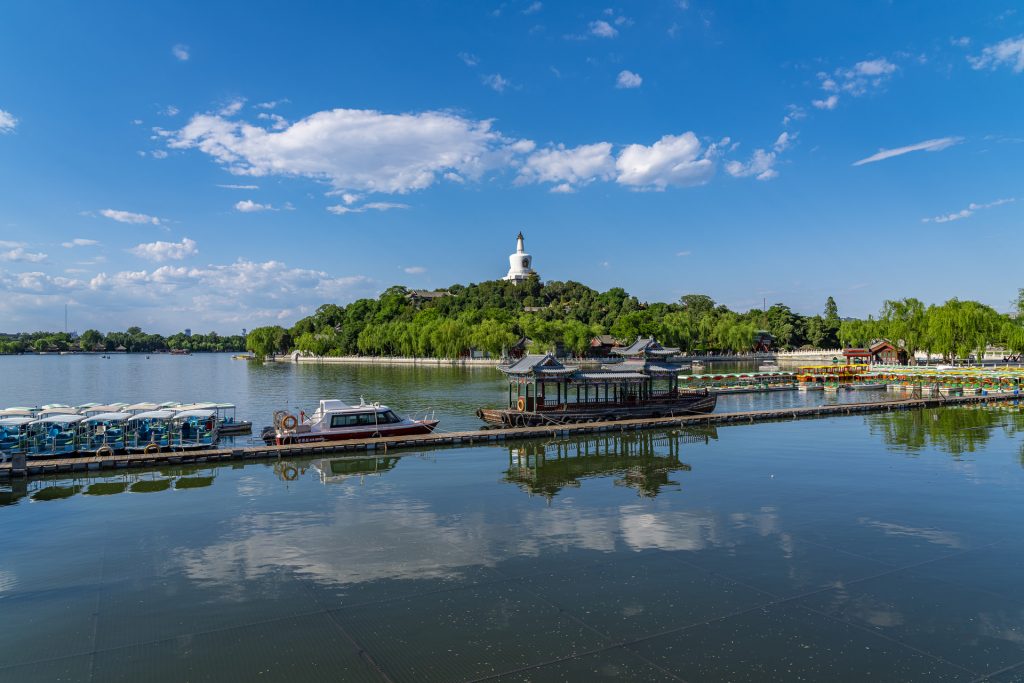
- Rent a paddleboat or rowboat to explore Beihai Park’s tranquil lake at your own pace. Enjoy the serene surroundings, spot colorful koi fish swimming in the water, and admire the reflections of ancient pavilions and trees on the lake’s surface.
- Wander through the various pavilions, temples, and halls scattered throughout Beihai Park, each showcasing traditional Chinese architecture and decorative elements. Take time to admire the intricate carvings, colorful paintings, and ornate roof designs.
- Take advantage of the park’s open spaces and shaded areas to relax, picnic, or engage in recreational activities like tai chi, kite flying, or leisurely strolls along the winding pathways.
- Check if there are any traditional Chinese music or dance performances happening in Beihai Park during your visit. These cultural events provide a glimpse into China’s artistic heritage and are often held in scenic outdoor settings.
- Beihai Park offers different charms throughout the year, from cherry blossoms in spring to vibrant foliage in autumn and frozen lakes in winter. Consider visiting during different seasons to experience the park’s ever-changing natural beauty.
Lama Temple (Yonghe Temple)
Exploring the Lama Temple (Yonghe Temple) as an international student in Beijing offers a fascinating glimpse into Tibetan Buddhist culture and architecture. Here’s a guide to help you make the most of your visit:
- The Lama Temple, also known as Yonghe Temple, is one of the largest and most important Tibetan Buddhist temples outside of Tibet. It was originally built as a royal residence in the 17th century and later converted into a Tibetan Buddhist monastery.
- The Lama Temple is typically open to visitors from early morning until early evening. Plan to spend at least an hour or two exploring the temple complex to fully appreciate its architectural beauty and spiritual ambiance.
- Explore key attractions within the Lama Temple, including the Hall of the Heavenly Kings (Tianwang Hall), the Hall of Harmony and Peace (Yonghegong Hall), the Hall of Everlasting Blessings (Yongyoudian), and the Pavilion of Ten Thousand Happinesses (Wanfuge). Each of these buildings showcases exquisite Tibetan and Chinese architectural styles and houses important religious artifacts and statues.
- Witness the traditional incense burning ceremony at the Lama Temple, where devotees light incense sticks and offer prayers to the Buddha. Experience the sensory richness of the ceremony as the air fills with the fragrant aroma of incense and the sound of chanting fills the halls.
- Admire the impressive collection of Buddhist statues, thangkas (scroll paintings), and religious artifacts displayed throughout the temple complex. Pay special attention to the towering Maitreya Buddha statue carved from a single piece of sandalwood, which is one of the highlights of the temple.
- Spin the prayer wheels located throughout the temple complex, a traditional Tibetan Buddhist practice believed to accumulate merit and blessings. Take a moment to read the inscriptions on the prayer flags fluttering in the breeze, which contain prayers and mantras for peace and prosperity.
- Take time to sit quietly and meditate in the tranquil courtyards and halls of the Lama Temple. Absorb the peaceful atmosphere, observe the rituals of worshippers, and reflect on the teachings of Tibetan Buddhism.
- Browse through the gift shops near the entrance of the Lama Temple to find souvenirs, religious items, and handicrafts inspired by Tibetan Buddhist culture. Support the local artisans and take home a meaningful memento of your visit.
Beijing Olympic Park
Exploring Beijing Olympic Park as an international student offers a chance to witness the legacy of the 2008 Summer Olympics and enjoy modern recreational facilities. Here’s a guide to help you make the most of your visit:
- Beijing Olympic Park was the primary venue for the 2008 Summer Olympics, hosting iconic structures such as the Bird’s Nest (National Stadium) and the Water Cube (National Aquatics Center). Today, it serves as a recreational and cultural hub for locals and visitors alike.
- The park is typically open to visitors from early morning until late evening. Plan to spend several hours exploring the various attractions and facilities within the park.
- Marvel at the architectural wonder of the Bird’s Nest, with its distinctive steel lattice design. While access to the interior may be limited, you can still admire the stadium from the outside and take photos against its iconic backdrop.
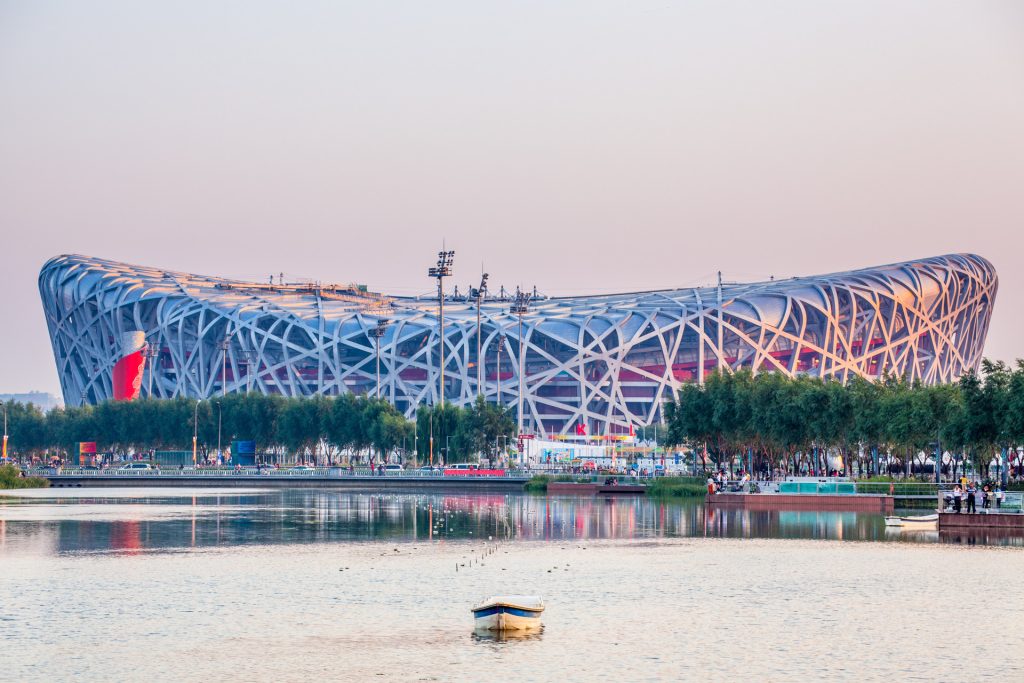
- Visit the Water Cube, known for its striking bubble-like façade. The building now houses a water park and a visitor center where you can learn about its design and construction.
- Explore the sprawling Olympic Forest Park, which surrounds the main Olympic venues. Enjoy scenic walking and cycling paths, lush greenery, and serene lakes, offering a peaceful retreat from the urban hustle and bustle.
- Discover cultural attractions within the park, such as the Olympic Tower and the Ling Long Pagoda. These landmarks offer panoramic views of the park and the city skyline, providing excellent photo opportunities.
- Take advantage of the park’s sports facilities, which include basketball courts, tennis courts, and soccer fields. You can also rent bicycles or participate in group fitness activities organized by local fitness clubs.
- Check if there are any outdoor performances or events happening in the park during your visit. From music concerts to dance performances, these cultural events add vibrancy to the park’s atmosphere.
- Enjoy a meal or snack at one of the park’s restaurants, cafes, or food stalls. Sample local delicacies or opt for international cuisine while taking in views of the Olympic venues.
- Browse through souvenir shops and boutiques within the park to find memorabilia commemorating the 2008 Olympics, as well as unique gifts and handicrafts.
- Beijing Olympic Park is easily accessible by public transportation, including subway, bus, and taxi. Plan your route in advance and consider using a navigation app to navigate the park’s expansive grounds.
